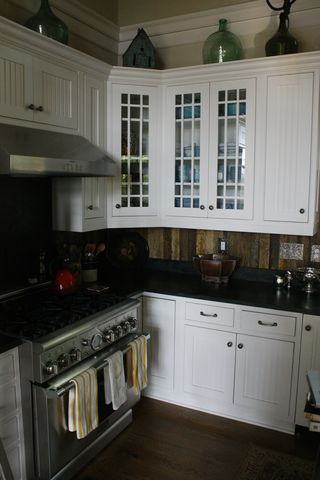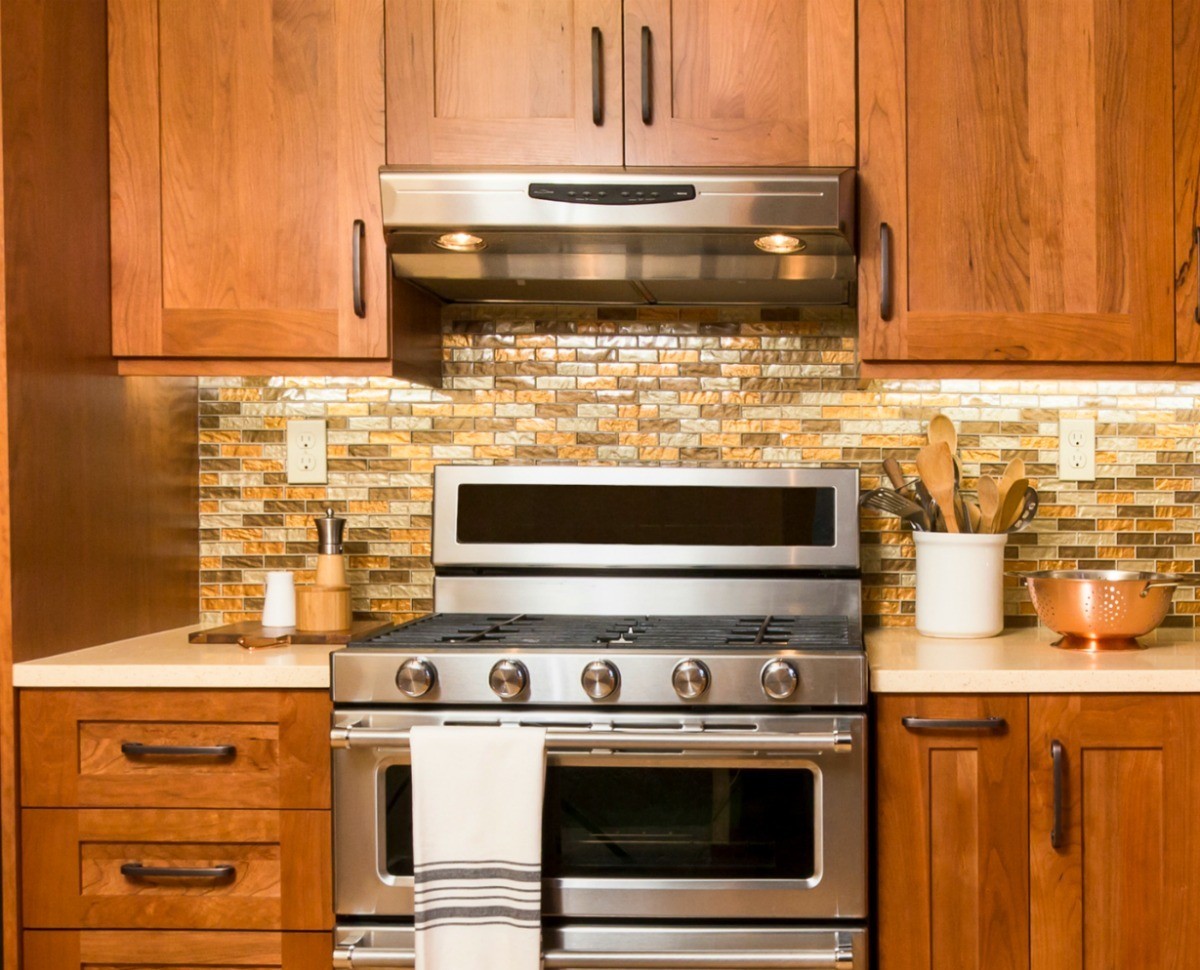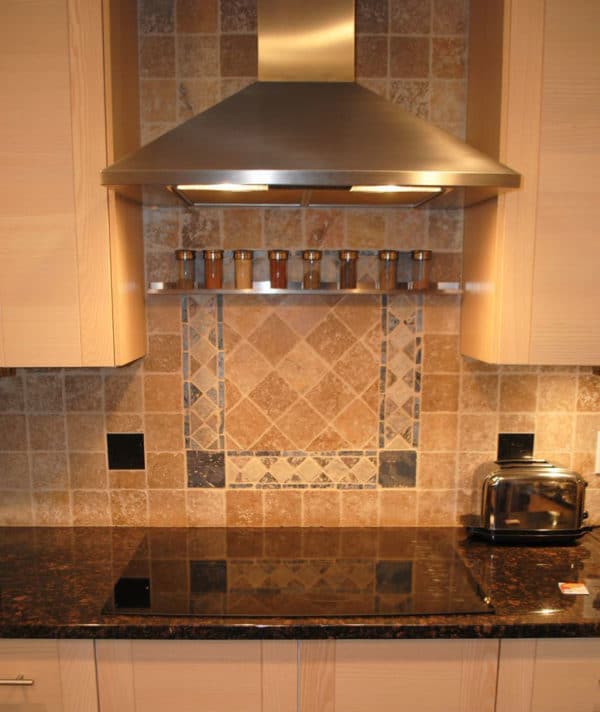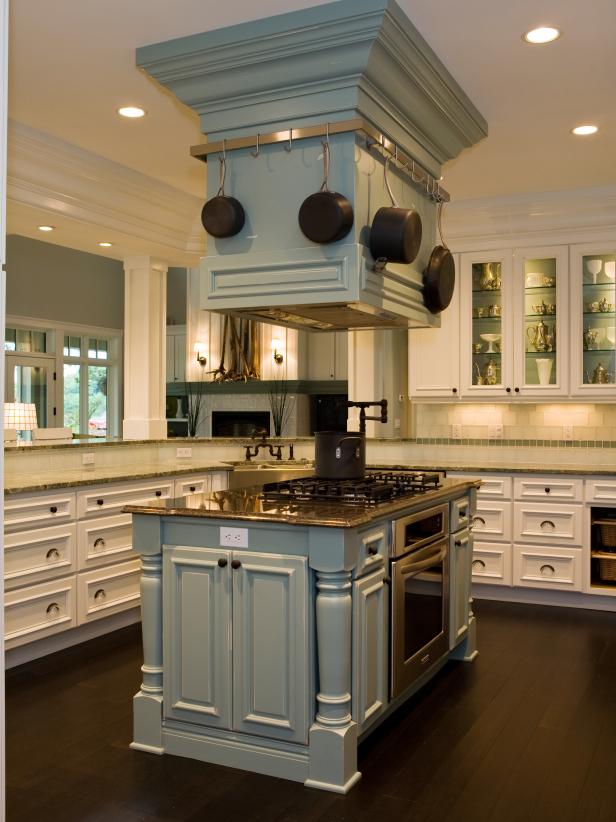When planning a kitchen layout, the decision to place cabinets over the stove requires careful consideration. In many homes, this space can be utilized effectively for storage, but it comes with its own set of challenges and design implications. I’ve always found this area to be an attractive option for storing pots, pans, and cooking essentials, but there are several factors to take into account before making that decision. From safety concerns to practical use, kitchen cabinets above the stove can be both a convenience and a potential source of frustration if not planned properly.
One of the main advantages of having cabinets above the stove is the extra storage space it provides. Kitchens are often tight on storage, especially when it comes to bulky items like cookware and small appliances. Installing cabinets above the stove allows you to maximize every inch of available space in your kitchen. This can be particularly useful in smaller kitchens where every square foot counts. I’ve found that having pots, pans, and other cooking tools within arm’s reach while cooking can make the entire process more efficient and enjoyable.

However, the placement of cabinets directly above the stove also brings up some important safety concerns. Stoves generate a significant amount of heat and steam, and over time, this can impact the materials of the cabinets. The proximity to heat can cause damage to certain types of cabinet finishes, especially if they aren’t made from heat-resistant materials. If you choose to install cabinets in this area, it’s important to ensure that they are made from durable, heat-tolerant materials to avoid warping, discoloration, or peeling over time.
Ventilation is another critical factor to consider when planning cabinets above the stove. Most stoves are equipped with a hood or exhaust fan, which is designed to pull heat, steam, and cooking odors away from the kitchen. If the ventilation isn’t adequate, the area above the stove can become a hotspot for grease buildup. I’ve learned that regular cleaning is necessary to keep this area in good condition, but even more important is ensuring that the hood or fan is properly installed and functioning efficiently. Poor ventilation can lead to an accumulation of grease and grime on your cabinets, which can be difficult to remove and may affect the longevity of the cabinetry.

From a design perspective, cabinets above the stove can present a visual challenge. Some kitchens have a hood or vent system that extends out from the stove, interrupting the flow of cabinetry. This can make the kitchen feel disjointed, especially in more modern or streamlined designs. On the other hand, some people opt for a more seamless look, incorporating a custom hood that blends with the cabinetry. I’ve found that integrating the hood with the cabinets can create a cleaner, more cohesive design, but it often requires custom cabinetry or professional installation, which can increase the cost of the renovation.
In terms of accessibility, cabinets above the stove aren’t always the easiest to reach, especially for those of us who aren’t particularly tall. These cabinets tend to be higher up, making it difficult to access frequently used items. For this reason, I usually recommend using this space for storing items that aren’t needed on a daily basis, such as seasonal cookware or specialized kitchen gadgets. If you’re planning to install cabinets in this area, it’s worth thinking about the practical use of the space and how easy it will be to access the contents.

Another consideration is the potential for heat damage to the contents of the cabinets. Even with proper ventilation, the area above the stove can become quite warm, especially when you’re cooking for long periods. This can impact the shelf life of items stored in these cabinets, particularly food products. For this reason, I never store spices or pantry items above the stove, as the heat can cause them to lose their flavor and potency more quickly. Instead, I use this space for non-food items like cookware, serving dishes, or kitchen linens.
The type of stove you have can also influence whether or not cabinets above the stove are a good idea. Gas stoves, for example, tend to generate more heat than electric or induction stoves, which can exacerbate the potential for heat damage to cabinets and their contents. If you have a gas stove, it’s especially important to consider the materials and finishes of the cabinets you install above it. I would recommend choosing heat-resistant materials like metal or heat-treated wood, and ensuring that the cabinets are installed at a safe distance from the stove to minimize the risk of heat exposure.
In terms of style, kitchen cabinets over the stove can either complement or detract from the overall aesthetic of the kitchen, depending on how they’re integrated into the design. Some people prefer to use this space for open shelving, which can create a lighter, more open feel in the kitchen. Others prefer closed cabinets to keep the area looking neat and clutter-free. I like the idea of using glass-front cabinets in this space, as it allows you to showcase decorative items or cookbooks while still protecting them from heat and grease. Glass-front cabinets also create a sense of openness without sacrificing storage space.
Another important aspect to consider is the installation process. Cabinets over the stove need to be securely fastened to the wall, as they will be exposed to higher levels of vibration and movement due to the cooking activity below. I’ve learned that it’s essential to work with a professional installer who can ensure that the cabinets are properly supported and aligned. The last thing you want is for your cabinets to become loose or misaligned over time due to the heat and vibrations from the stove.

When planning your kitchen layout, it’s also worth considering alternative storage solutions for the space above the stove. Some people opt to install a pot rack or a rail system instead of cabinets, which can provide easy access to frequently used cookware without the risk of heat damage. I’ve seen this approach used in both traditional and modern kitchens, and it can be a great way to add both function and style to the space. Pot racks or rail systems also eliminate the need for deep cleaning, as they don’t trap grease and grime the way cabinets can.
One potential downside to eliminating cabinets above the stove is the loss of storage space, particularly in smaller kitchens. However, this can be offset by making use of other areas in the kitchen, such as adding pull-out drawers, corner cabinets, or installing taller cabinets elsewhere. In my experience, maximizing vertical storage elsewhere in the kitchen can make up for the loss of cabinets above the stove, especially if the trade-off is improved ventilation and a cleaner overall look.
Another option is to install shallow cabinets above the stove, which can provide some storage without crowding the area or interfering with the ventilation system. These cabinets can be used to store small, lightweight items that don’t need to be accessed frequently. Shallow cabinets can also help maintain a streamlined look in the kitchen, especially if you’re working with a smaller space.
Finally, when designing cabinets over the stove, it’s important to think about the overall flow and functionality of the kitchen. The kitchen is often the heart of the home, and the layout must support both cooking and socializing. Placing cabinets above the stove can either enhance or detract from the kitchen’s functionality, depending on how they are integrated into the design. I’ve found that a well-thought-out kitchen layout can make all the difference in how enjoyable and efficient the space is to use.

Common Mistakes to Avoid:
One common mistake when installing cabinets over the stove is neglecting to consider the impact of heat and steam on the materials. Over time, exposure to heat can warp or damage certain types of cabinet finishes. It’s important to choose cabinets made from heat-resistant materials to avoid long-term damage.
Another mistake is failing to account for proper ventilation. The area above the stove is prone to grease buildup if not ventilated correctly. Installing an exhaust fan or hood is crucial to prevent grease from accumulating on the cabinets and to ensure the longevity of the materials.
Placing frequently used items in cabinets above the stove is another misstep. These cabinets are often difficult to reach, especially for shorter individuals, and accessing them while cooking can be inconvenient. It’s best to use this space for items that are not needed on a daily basis.

Some people overlook the potential for heat damage to the contents of the cabinets. Storing food or spices in cabinets above the stove can cause them to spoil or lose their potency faster due to the heat. It’s better to store non-perishable items like cookware or utensils in these cabinets.
Improper installation is also a common error. Cabinets above the stove need to be securely fastened to handle the vibrations and movement from the stove below. It’s important to hire a professional to ensure that the cabinets are properly installed and aligned.
Last, failing to clean the area regularly can lead to grease buildup and discoloration. Cabinets above the stove require more frequent cleaning due to their exposure to steam, heat, and grease. Regular maintenance is key to keeping them in good condition.

Are cabinets above the stove safe?
Yes, cabinets above the stove can be safe as long as they are made from heat-resistant materials and are installed at an appropriate distance from the stove. Proper ventilation is also important to prevent heat and grease from accumulating on the cabinets. Regular cleaning and maintenance can help ensure the safety and longevity of the cabinets.
Can I store food in cabinets above the stove?
It’s not recommended to store food in cabinets above the stove, especially perishable items or spices. The heat from the stove can cause food to spoil or lose its flavor and potency more quickly. It’s better to store non-food items like cookware, utensils, or kitchen linens in these cabinets.
How do I prevent grease buildup on cabinets above the stove?
To prevent grease buildup, it’s essential to have proper ventilation, such as an exhaust fan or range hood, installed above the stove. Regular cleaning with a degreasing cleaner is also important to keep the cabinets free of grease and grime. Using heat-resistant materials for the cabinets can help minimize the impact of grease and heat over time.

Can I install shallow cabinets above the stove?
Yes, shallow cabinets are a great option if you want to maintain some storage space without crowding the area above the stove. These cabinets can be used to store small, lightweight items and can help create a more streamlined look in the kitchen. Shallow cabinets also minimize the impact of heat and steam on the contents inside.
Should I install open shelving instead of cabinets above the stove?
Open shelving can be a stylish alternative to cabinets above the stove, especially if you prefer a more open, airy feel in your kitchen. However, open shelves are more prone to grease and dust accumulation and may require more frequent cleaning. If you choose open shelving, it’s important to consider the materials and how easy they will be to clean.
How high should cabinets be installed above the stove?
Cabinets should be installed at least 30 inches above the stove to ensure that they are safely out of the heat zone. This distance allows for proper ventilation and minimizes the risk of heat damage to the cabinets and their contents. Depending on the size of your kitchen and the type of stove you have, the height may vary slightly.

Move cabinet up to fit an over-the-range microwave

Photo Page HGTV

Come, Look Inside Our Kitchen Cabinets! Andrea Dekker

Related Posts:
- Wholesale Kitchen Cabinets Atlanta Ga
- Kitchen Cabinet Drawer Rails
- How To Stain Kitchen Cabinets White
- Kitchen Cabinet Mixer Lift
- Kitchen Cabinets 400mm Depth
- Discount White Kitchen Cabinets
- Raising Kitchen Base Cabinets
- Kitchen Cabinets With Tin Inserts
- Antique Brass Kitchen Cabinet Knobs
- Outdoor Kitchen Base Cabinets